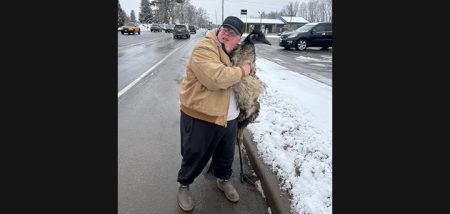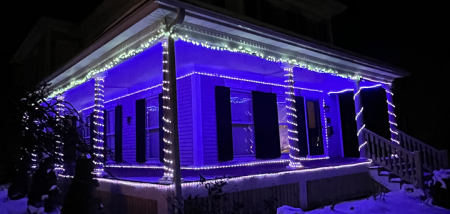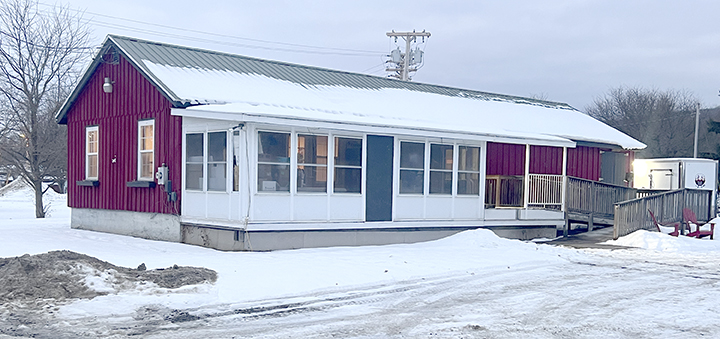Once Upon A Dance – At The Grove
Published:
September 19th, 2011

Editor’s Note: The Norwich Dance Club is celebrating the history of ballroom dancing in Chenango County this week with a number of events, including an exhibit at Guernsey Memorial Library and a Community Ballroom Dance at St. Bart’s Parish Center on Saturday. For more information, visit www.norwichdanceclub.com.
By David Graham
Correspondent
Dancing in Bullthistle Country ranges from the round and square dances of the hinterlands to the fancy dress balls of urban society. This column hopes to let the reader look back at how our ancestors tripped the light fantastic.
Edwin J. “Colonel” Loomis was born on May 5th, 1845, on a large farm near Whaupaunauca, North Norwich. His parents (J. Clark and Laura S. Loomis) died when he was young and he grew to manhood under the guidance of Nelson O. Wood and his sister. In 1863, he enlisted in the Union Army, but was seriously injured when thrown from a horse and mustered out. With the Woods he moved to Norwich in 1866 where he became a telegrapher for Western Union.
In the early 1870’s, Edwin was appointed the sergeant-at-arms of the New York State Senate. As such he served the Senate’s summons to the infamous “Boss” Tweed of NYC and somehow came back alive. He became the president of the corporation of Norwich and helped create the current East and West Parks out of the Village “Green.” Edwin later got the state military authorities to headquarter the 103rd Regiment of New York State Volunteers (Militia) in Norwich under his command as a colonel (hence his nickname). He secured an armory on Elm Street and got uniforms and guns for the men and uniforms for the band. In 1878 he gave the city of Norwich a band pagoda as the proper place for the band of the 103rd to perform (the small structure in East Park is the remainder of a completely rebuilt replica of the original). It’s obvious that music was important to the Colonel, but what about dancing?
In 1880, Edwin acquired property on the east shore of Mathewson’s Pond and began construction of the Hotel Loomis in a grove of towering pine and hemlock trees. The rustic looking three story structure (the outside was covered with bark) included a dancing hall on the 3rd floor that had 18 foot ceilings. The Colonel advertised his beautiful summer resort as being on the shores of Chenango Lake and no one has called it anything else since. His Hotel developed a reputation for good food especially the fresh vegetables, prime meat and local fish. However, the “Rocky Mountain Trout” ordered by many unsuspecting first time visitors were actually locally caught eels.
Over the subsequent decades, the Hotel drew guests from all over the country and even overseas. The yearly Fourth of July Celebrations (that continued to at least 1928) featured multiple bands, scores of games and entertainments, plentiful food and outdoor dance platforms.
Colonel Loomis died at the Hotel on June 18th, 1918, and the property was sold to the Norwich Water Works. The Hotel (now called The Colonel’s Inn) was re-opened under lease and 300 people bought tickets to the opening evening dance. The third floor dance hall whose 70 couple capacity required dancing by rotation was replaced in 1921 by an attached outdoor dance pavilion extending 45 feet from the hotel’s north side.
Regular dances were held throughout the season on Tuesday and Friday evenings with dozens of couples attending to dance from 9 to after 12. A May Dance in 1923 saw 117 tickets sold and featured a foxtrot competition (the prize for the female winner was a $5 gold piece). On May 17th, 1924, 65 couples attended a dance and in 1925 Jazz arrived at the Inn with the Serenaders under Dick Boas. In 1926 dance attendance was so great that a 25 foot addition to the dance pavilion was made.
In 1928, McNeeley’s Orchestra drew 200 couples to a dance. They had a large following from playing during the winter at the Norwich Club (of which there will be more in a later column). However, the Great Depression ended the gay vacationing society that had supported the Inn and in 1931 the Colonel’s Inn closed its doors to the public and was torn down ending a glorious chapter in Chenango County dancing.
Some of the information and photographs in this column were provided courtesy of the Chenango County Historian’s Office. If you want to learn more about dancing in Bullthistle Country there will be exhibits at the Guernsey Public Library (9/17-22) and the Chenango County Historical Society Museum on Hale Street (mid-October). Any and all errors herein are strictly the responsibility of the author.
Comments









